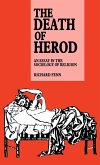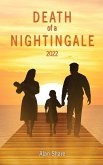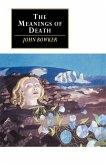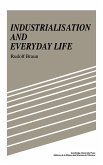- Gebundenes Buch
- Merkliste
- Auf die Merkliste
- Bewerten Bewerten
- Teilen
- Produkt teilen
- Produkterinnerung
- Produkterinnerung
This book offers a novel approach to the cultural and social history of Europe after the Second World War.
Andere Kunden interessierten sich auch für
![The Death of Herod The Death of Herod]() Richard K. FennThe Death of Herod94,99 €
Richard K. FennThe Death of Herod94,99 €![The Age of Spectacular Death The Age of Spectacular Death]() The Age of Spectacular Death180,99 €
The Age of Spectacular Death180,99 €![Death of a Nightingale 2022 Death of a Nightingale 2022]() Alan ShareDeath of a Nightingale 202219,99 €
Alan ShareDeath of a Nightingale 202219,99 €![The Meanings of Death The Meanings of Death]() John BowkerThe Meanings of Death29,99 €
John BowkerThe Meanings of Death29,99 €![Industrialisation and Everyday Life Industrialisation and Everyday Life]() Rudolf BraunIndustrialisation and Everyday Life103,99 €
Rudolf BraunIndustrialisation and Everyday Life103,99 €![What Is True Civilization; Or, Means to Suppress the Practice of Duelling, to Prevent, Or to Punish, Crimes, and to Abolish the Punishment of Death What Is True Civilization; Or, Means to Suppress the Practice of Duelling, to Prevent, Or to Punish, Crimes, and to Abolish the Punishment of Death]() Giacomo SegaWhat Is True Civilization; Or, Means to Suppress the Practice of Duelling, to Prevent, Or to Punish, Crimes, and to Abolish the Punishment of Death35,99 €
Giacomo SegaWhat Is True Civilization; Or, Means to Suppress the Practice of Duelling, to Prevent, Or to Punish, Crimes, and to Abolish the Punishment of Death35,99 €![Communication at the End of Life Communication at the End of Life]() Communication at the End of Life155,70 €
Communication at the End of Life155,70 €-
-
-
This book offers a novel approach to the cultural and social history of Europe after the Second World War.
Hinweis: Dieser Artikel kann nur an eine deutsche Lieferadresse ausgeliefert werden.
Hinweis: Dieser Artikel kann nur an eine deutsche Lieferadresse ausgeliefert werden.
Produktdetails
- Produktdetails
- Verlag: Cambridge University Press
- Seitenzahl: 376
- Erscheinungstermin: 23. Januar 2015
- Englisch
- Abmessung: 235mm x 157mm x 27mm
- Gewicht: 760g
- ISBN-13: 9780521804134
- ISBN-10: 0521804132
- Artikelnr.: 29339891
- Herstellerkennzeichnung
- Libri GmbH
- Europaallee 1
- 36244 Bad Hersfeld
- gpsr@libri.de
- Verlag: Cambridge University Press
- Seitenzahl: 376
- Erscheinungstermin: 23. Januar 2015
- Englisch
- Abmessung: 235mm x 157mm x 27mm
- Gewicht: 760g
- ISBN-13: 9780521804134
- ISBN-10: 0521804132
- Artikelnr.: 29339891
- Herstellerkennzeichnung
- Libri GmbH
- Europaallee 1
- 36244 Bad Hersfeld
- gpsr@libri.de
Introduction: violence, normality, and the construction of postwar Europe
Richard Bessel and Dirk Schumann; 1. Post-traumatic stress disorder and
World War II: can a psychiatric concept help us understand postwar society?
Alice Förster and Birgit Beck; 2. Between pain and silence: remembering the
victims of violence in Germany after 1949 Sabine Behrenbeck; 3. Paths of
normalization after the persecution of the Jews: the Netherlands, France,
and West Germany in the 1950s Ido De Haan; 4. Trauma, memory and
motherhood: Germans and Jewish displaced persons in post-Nazi Germany,
1945-9 Atina Grossman; 5. Memory and the narrative of rape in Budapest and
Vienna in 1945 Andrea Petö; 6. 'Going home': the personal adjustment of
British and American servicemen after the war Joanna Bourke; 7. Desperately
seeking normality: sex and marriage in the wake of war Dagmar Herzog; 8.
Family life and 'normality' in postwar British culture Pat Thane; 9.
Continuities and discontinuities of consumer mentality in West Germany in
the 1950s Michael Wildt; 10. 'Strengthened and purified through ordeal by
fire': ecclesiastical triumphalism in the ruins of Europe Damian van Melis;
11. The nationalism of victimhood: selective violence and national grief in
western Europe, 1940-60 Pieter Lagrou; 12. Italy after fascism: the
predicament of dominant narratives Donald Sasson; 13. The politics of
post-fascist aesthetics: 1950s west and east German industrial design Paul
Betts; 14. Dissonance, normality, and the historical method: why did some
Germans think of Tourism after May 8, 1945? Alon Confino.
Richard Bessel and Dirk Schumann; 1. Post-traumatic stress disorder and
World War II: can a psychiatric concept help us understand postwar society?
Alice Förster and Birgit Beck; 2. Between pain and silence: remembering the
victims of violence in Germany after 1949 Sabine Behrenbeck; 3. Paths of
normalization after the persecution of the Jews: the Netherlands, France,
and West Germany in the 1950s Ido De Haan; 4. Trauma, memory and
motherhood: Germans and Jewish displaced persons in post-Nazi Germany,
1945-9 Atina Grossman; 5. Memory and the narrative of rape in Budapest and
Vienna in 1945 Andrea Petö; 6. 'Going home': the personal adjustment of
British and American servicemen after the war Joanna Bourke; 7. Desperately
seeking normality: sex and marriage in the wake of war Dagmar Herzog; 8.
Family life and 'normality' in postwar British culture Pat Thane; 9.
Continuities and discontinuities of consumer mentality in West Germany in
the 1950s Michael Wildt; 10. 'Strengthened and purified through ordeal by
fire': ecclesiastical triumphalism in the ruins of Europe Damian van Melis;
11. The nationalism of victimhood: selective violence and national grief in
western Europe, 1940-60 Pieter Lagrou; 12. Italy after fascism: the
predicament of dominant narratives Donald Sasson; 13. The politics of
post-fascist aesthetics: 1950s west and east German industrial design Paul
Betts; 14. Dissonance, normality, and the historical method: why did some
Germans think of Tourism after May 8, 1945? Alon Confino.
Introduction: violence, normality, and the construction of postwar Europe
Richard Bessel and Dirk Schumann; 1. Post-traumatic stress disorder and
World War II: can a psychiatric concept help us understand postwar society?
Alice Förster and Birgit Beck; 2. Between pain and silence: remembering the
victims of violence in Germany after 1949 Sabine Behrenbeck; 3. Paths of
normalization after the persecution of the Jews: the Netherlands, France,
and West Germany in the 1950s Ido De Haan; 4. Trauma, memory and
motherhood: Germans and Jewish displaced persons in post-Nazi Germany,
1945-9 Atina Grossman; 5. Memory and the narrative of rape in Budapest and
Vienna in 1945 Andrea Petö; 6. 'Going home': the personal adjustment of
British and American servicemen after the war Joanna Bourke; 7. Desperately
seeking normality: sex and marriage in the wake of war Dagmar Herzog; 8.
Family life and 'normality' in postwar British culture Pat Thane; 9.
Continuities and discontinuities of consumer mentality in West Germany in
the 1950s Michael Wildt; 10. 'Strengthened and purified through ordeal by
fire': ecclesiastical triumphalism in the ruins of Europe Damian van Melis;
11. The nationalism of victimhood: selective violence and national grief in
western Europe, 1940-60 Pieter Lagrou; 12. Italy after fascism: the
predicament of dominant narratives Donald Sasson; 13. The politics of
post-fascist aesthetics: 1950s west and east German industrial design Paul
Betts; 14. Dissonance, normality, and the historical method: why did some
Germans think of Tourism after May 8, 1945? Alon Confino.
Richard Bessel and Dirk Schumann; 1. Post-traumatic stress disorder and
World War II: can a psychiatric concept help us understand postwar society?
Alice Förster and Birgit Beck; 2. Between pain and silence: remembering the
victims of violence in Germany after 1949 Sabine Behrenbeck; 3. Paths of
normalization after the persecution of the Jews: the Netherlands, France,
and West Germany in the 1950s Ido De Haan; 4. Trauma, memory and
motherhood: Germans and Jewish displaced persons in post-Nazi Germany,
1945-9 Atina Grossman; 5. Memory and the narrative of rape in Budapest and
Vienna in 1945 Andrea Petö; 6. 'Going home': the personal adjustment of
British and American servicemen after the war Joanna Bourke; 7. Desperately
seeking normality: sex and marriage in the wake of war Dagmar Herzog; 8.
Family life and 'normality' in postwar British culture Pat Thane; 9.
Continuities and discontinuities of consumer mentality in West Germany in
the 1950s Michael Wildt; 10. 'Strengthened and purified through ordeal by
fire': ecclesiastical triumphalism in the ruins of Europe Damian van Melis;
11. The nationalism of victimhood: selective violence and national grief in
western Europe, 1940-60 Pieter Lagrou; 12. Italy after fascism: the
predicament of dominant narratives Donald Sasson; 13. The politics of
post-fascist aesthetics: 1950s west and east German industrial design Paul
Betts; 14. Dissonance, normality, and the historical method: why did some
Germans think of Tourism after May 8, 1945? Alon Confino.








